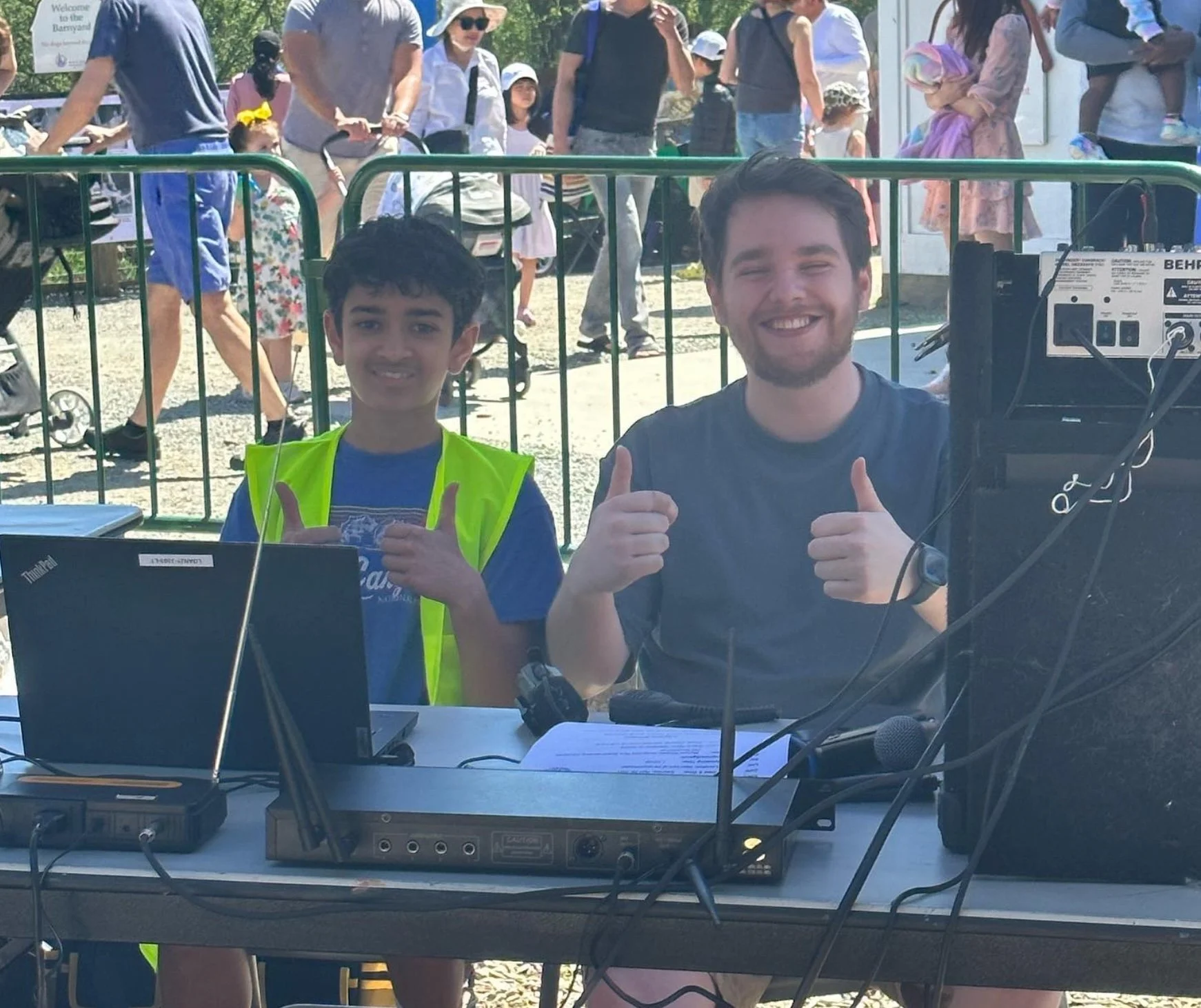Theater Sound Design
Creating, gathering, editing, and implementation of SFX, Music, and Animations.
Since 2017, I have worked on 38+ productions, having been the sole sound designer for 30 of them.
Bellevue Youth Theatre (BYT) is a community theater dedicated to providing theater arts opportunities for all young people, regardless of income or ability.
I love sound designing for this theater because of the opportunity it gives me to give back to my community. It gives me the privledge to nurture and cultivate social and professional skills for teens.
This theater was my first experience sound designing so I wouldn’t be where I am without it.
Screengrab of QLab 5 project for 2023 production of Peter Pan Jr.
Skills I’ve learned:
Expert familiarization with pre-production and production pipeline
When to move on from currently working on an asset to work on the next one
Recording live sounds and use of libraries to sound design entire theater productions
Mentoring of teens to develop sound and professional development skills
Collaboration with all sorts of design and production to make the director’s vision come to life
Running sound with teen volunteer Atharva, May 2023
Here is what the production pipeline looks like!
-
After the first week or two of rehearsal, the entire production team gets together to talk about key themes for the show, along with an initial overview of the director’s vision for each aspect of the show. Lights, Sound, Hair and makeup, Costumes, Set Design, etc. Meetings like this will occur throughout the process before paper tech.
-
Paper tech (sometimes called dry tech at other theaters) is a meeting where we go through the show line by line and detail what tech is needed for the show. We organize each tech event as “cues”. I am in charge of the sound design AND implementation of visuals in the form of projections - if the show has projections. By the end of paper tech, I have a script with every cue, sound, projections, AND lighting. The lighting cues are, so I know what happening with the lights along with sound cues.
-
When I began sound designing at 17 years old, I would come in the weekend before tech week with just the paper tech script and program the show. That was fine for a while until I got to a show with very heavy sound and projection cues. It was a production of The Little Prince in 2017.
Since then, I have made a spreadsheet on Google Sheets for every show before I program the weekend before tech week. The Spreadsheet contains the page, cue number, cue type, name of cue, fade duration, notes, and file names. This rapidly expedites programming of the show, along with serving as an asset list for when I begin to make content for the show.
-
SFX:
In the early days of my sound design experience, freesound.org was my best friend. It was all I had and any SFX that was needed for a show, was limited to what I could find/create. Eventually, I acquired access to a Splice account and used that along with freesound.org for my assets. Starting it 2022, I had a subscription for Soundly and use primarily that library for designing. Along with smaller individually purchased libraries to meet the show needs.
Music:
When I first designed my first show in 2017, The Little Mermaid (a non-musical version), the director challenged me to design the whole show’s music using ONLY the Ponyo OST by Joe Hisaishi. So all scene transitions and underscores were tracks edited from Ponyo. This proved to be very difficult. With a finite amount of music, clever editing was needed to fit the timing of cues and what emotions the director wanted the audience to feel.
This defined how I have continued designing shows for the last decade. Using one OST per show helps the show have a strong auditory identity. I quickly learned that sometimes, there just isn’t the material for the needs of a show. So, I have had to use supplemental material to satisfy the director’s vision.
Some of my favorite OST-show pairings:
Curb Your Enthusiasm — As You Like It (2017)
Over the Garden Wall — Winnie the Pooh (2023)
Alternatively, I have used an artist’s discography. Some of my favorites are:
Kate Bush — The Mummy’s Revenge (2024)
Taylor Swift — Alice in Wonderland (2023)
-
QLab is a cue-based, multimedia playback software for macOS. It allows for non-destructive editing during live shows.
One of the biggest aspects to my sound design work at this theater is the programming of the QLab project for the show. This can take me anywhere from 1-8 hours. Our theater handles audio AND projections through QLab. While I don’t create the actual visuals, I am responsible for programming them into QLab.
An example of a simple audio cue is below!
Cue 12 is a group cue. The item in red is the actual audio file. This cue fades in the music. So, the red item has a level at -INF. The blue item below is bringing the music up to 0 dB over 5 seconds. In this group cue, both the red and blue items get taken at once. Cue 13 fades the music back down to -INF over 7 seconds. For efficiency, I normally would not make cue 13 a group cue since there is only one item inside it.
Simple example cue pairing:

